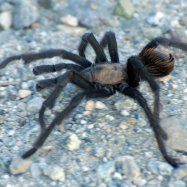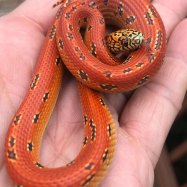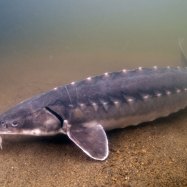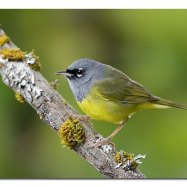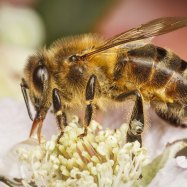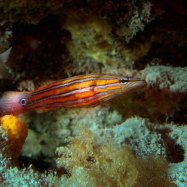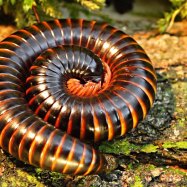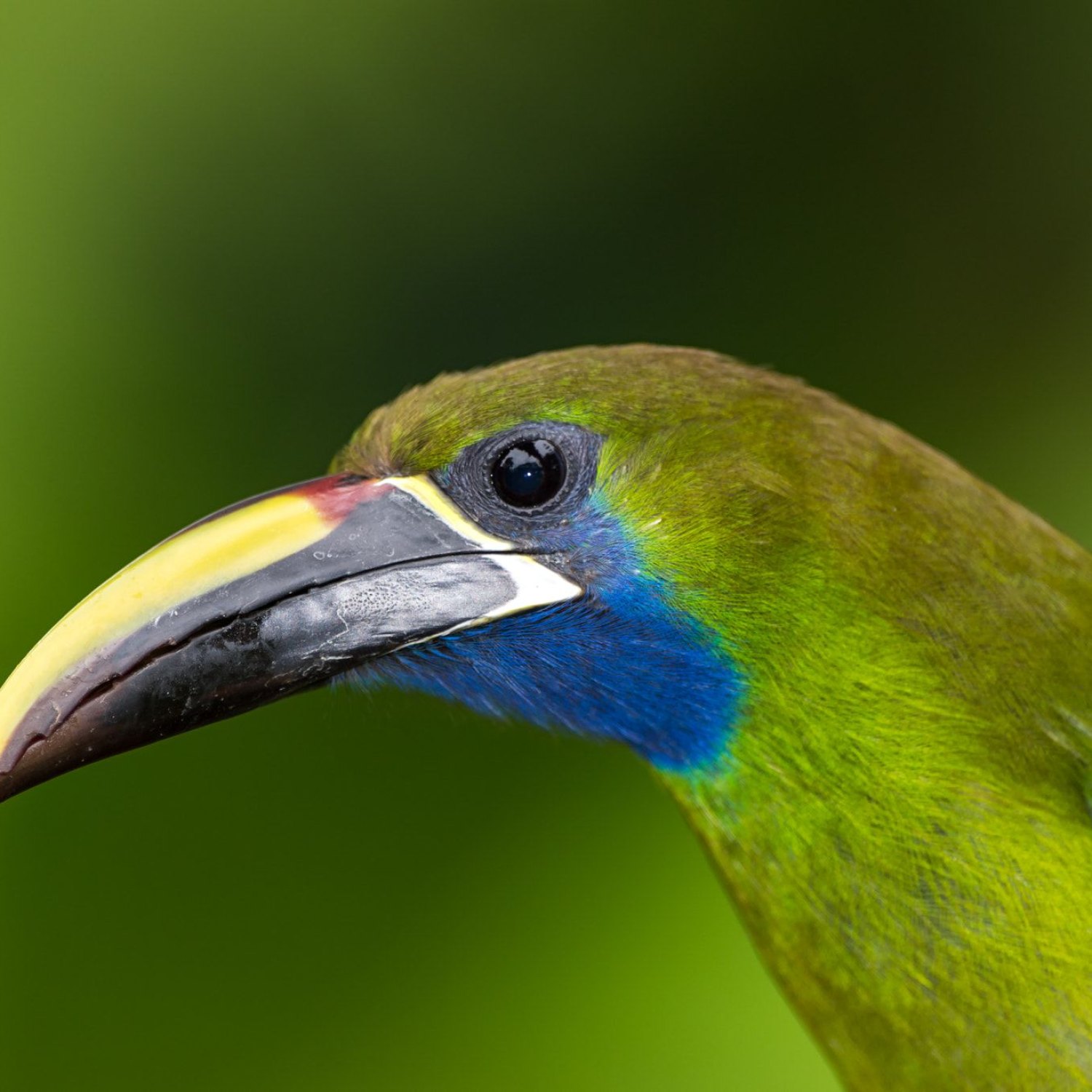
Emerald Toucanet
30-35 cm
The Emerald Toucanet, a colorful bird found in lowland and montane forests, belongs to the Ramphastidae family. With a body length of 30-35 cm, it has a small to medium-sized compact body and short wings. These lively birds are a delight to spot in their natural habitat. #EmeraldToucanet #birdwatching #wildlifeexperience
Animal Details Summary:
Common Name: Emerald Toucanet
Kingdom: Animalia
Habitat: Tropical rainforests, cloud forests, montane forests
The Majestic Emerald Toucanet: A Jewel of the Tropics
Welcome to the tropical rainforests, where the lush green vegetation is home to some of the most stunning creatures on this planet. Among those creatures stands a bird, small in size, but with an iridescent appearance that reflects the beauty of its habitat. The Emerald Toucanet, scientifically known as Aulacorhynchus prasinus, is a jewel of the tropics, with its vibrant colors and intriguing features. In this article, we will delve into the world of this magnificent bird, exploring its natural habitat, unique characteristics, and its significance in the ecosystem Emerald Toucanet.A Brief Introduction to the Emerald Toucanet
The Emerald Toucanet is a species of the Ramphastidae family, which comprises of toucans, toucanets, and aracaris. These birds are found in tropical rainforests, cloud forests, and montane forests in Central America and northern South America. Known for their colorful plumage and distinctive beaks, toucans are a popular sight for both bird enthusiasts and casual observers.The Emerald Toucanet is smaller in size compared to other toucan species, measuring around 30-35 cm in length. Despite its compact body, it displays a range of colors - mainly green with a red underpart, yellow throat, and blue patches around the eyes. These colors make the Emerald Toucanet one of the most visually striking birds in its habitat, resembling a jewel among the vast sea of green foliage.
Where Can You Find the Emerald Toucanet?
The Emerald Toucanet is native to Central America and northern South America, inhabiting countries such as Mexico, Guatemala, Belize, Honduras, Nicaragua, Costa Rica, Panama, Colombia, Venezuela, and Ecuador. They are commonly found in lowland and montane forests, where they can be spotted perching on trees or flying across the forest canopy.In Central America, the Emerald Toucanet can be found in the Pacific region, from Mexico to Costa Rica, and in the Caribbean region, from Honduras to Panama Egyptian Goose. In South America, they are primarily found in the Andes range, from Colombia to Ecuador. They are also known to inhabit the Amazon basin, though they are less abundant in this area.
Their preferred habitat is dense, humid forests, with a variety of tall trees and a diverse range of fruits. They are often found in areas with an elevation of up to 2,500 meters, making them adaptable to various altitudes.
Unique Characteristics of the Emerald Toucanet
Besides its vibrant colors and compact body, the Emerald Toucanet has several unique characteristics that set it apart from other birds. Let's take a closer look at some of these features:- Frugivorous Diet: The Emerald Toucanet is a frugivorous bird, meaning its diet primarily consists of fruits. They have a specialized bill that helps them pick and devour a variety of fruits, including figs, berries, and wild fruits. However, they are not solely dependent on fruits and will also consume insects and small vertebrates, making them omnivorous.
- Short Wings: Despite being able to fly, the Emerald Toucanet has relatively short wings. This helps them maneuver through the dense rainforest without getting tangled in the branches and leaves.
- Social Creatures: The Emerald Toucanet is a social bird, often seen in pairs or small groups. They are known to have a complex social structure that allows them to maintain close bonds with each other within the group.
- Distinctive Beak: It's impossible to talk about the Emerald Toucanet without mentioning its iconic beak. While it may seem large and heavy, it is surprisingly lightweight due to its hollow structure. The beak is also used as a thermoregulator, where they extend it to dissipate heat during warm weather and tuck it in to preserve heat during colder days.
- Acrobatic Flyers: Despite their short wings, the Emerald Toucanet is an excellent flyer, with the ability to perform acrobatic maneuvers during flight. They can also fly fast and for long distances, making it easier for them to commute between different feeding and roosting locations.
The Emerald Toucanet in the Ecosystem
Besides its beauty and unique characteristics, the Emerald Toucanet also plays a significant role in the ecosystem. As frugivorous birds, they are crucial seed dispersers, helping in the regeneration of plants and trees in the forest. As they move from tree to tree, consuming fruits and spreading seeds, they contribute to the survival and growth of various plant species.This bird is also an essential part of the food chain, serving as both predator and prey. Its colorful appearance acts as a defense mechanism against predators, making it less likely to be attacked. At the same time, the Emerald Toucanet is also a food source for other creatures, including large birds of prey, snakes, and small mammals.
Furthermore, the Emerald Toucanet serves as an indicator species for the health of the forest. Its presence and population can indicate the overall well-being and balance of the ecosystem. Any impact on this bird's population can also suggest potential threats to the forest and the other creatures that inhabit it.
Conservation of the Emerald Toucanet
Despite its widespread distribution, the Emerald Toucanet is facing several threats to its survival, with habitat loss being the most significant one. The destruction of forests for agriculture, logging, and urbanization has resulted in the fragmentation of their habitat, making it difficult for them to find suitable food and breeding sites.Illegal pet trade is another significant threat to the Emerald Toucanet's population. These birds are often captured for the exotic pet trade, resulting in a decline in their numbers in the wild. This issue is further compounded by the lack of proper laws and enforcement to protect these birds from being captured and traded.
Several conservation efforts are underway to protect the Emerald Toucanet, including research and monitoring programs, habitat restoration, and captive breeding programs. Organizations such as BirdLife International and Fundación ProAves are also working towards raising awareness and promoting the conservation of this species.
In Conclusion
The Emerald Toucanet is truly a gem of the tropics, with its breathtaking colors, unique characteristics, and significant role in the ecosystem. As we continue to explore and learn about the wonders of nature, let us remember the importance of conserving and protecting these incredible creatures and their habitats for future generations to witness and appreciate.Sources:
https://nationalzoo.si.edu/animals/emerald-toucanet
https://www.naturalworldsafaris.com/blog/emerald-toucanet
https://www.iucnredlist.org/species/22682580/93272235
https://www.worldlandtrust.org/species/birds/emerald-toucanet/

Emerald Toucanet
Animal Details Emerald Toucanet - Scientific Name: Aulacorhynchus prasinus
- Category: Animals E
- Scientific Name: Aulacorhynchus prasinus
- Common Name: Emerald Toucanet
- Kingdom: Animalia
- Phylum: Chordata
- Class: Aves
- Order: Piciformes
- Family: Ramphastidae
- Habitat: Tropical rainforests, cloud forests, montane forests
- Feeding Method: Frugivorous, also consumes insects and small vertebrates
- Geographical Distribution: Central America and northern South America
- Country of Origin: Countries in Central America and northern South America
- Location: Lowland and montane forests
- Animal Coloration: Mainly green with red underparts, yellow throat, and blue patches around the eyes
- Body Shape: Small to medium-sized with a compact body and short wings
- Length: 30-35 cm
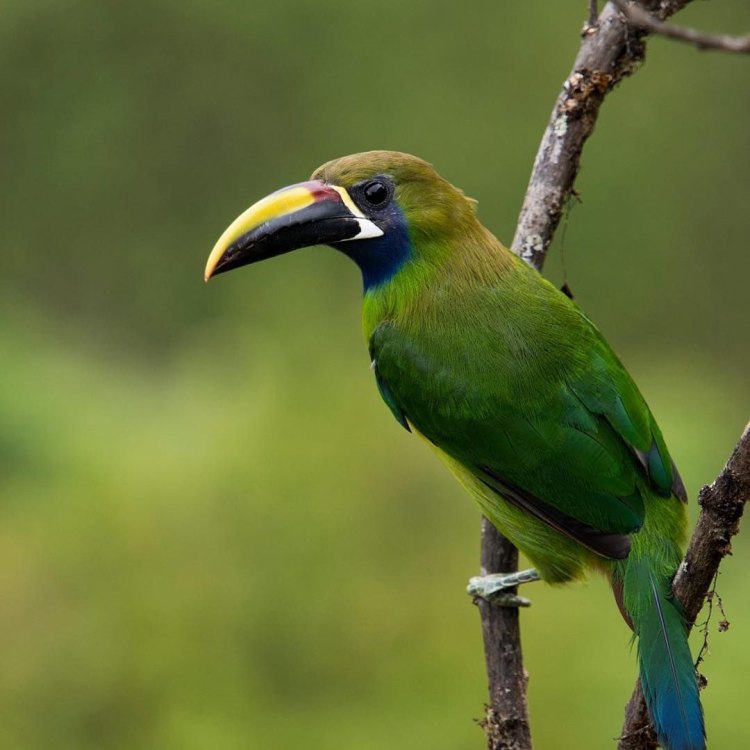
Emerald Toucanet
- Adult Size: Small to medium-sized
- Average Lifespan: Up to 20 years
- Reproduction: Monogamous
- Reproductive Behavior: Nest in tree cavities
- Sound or Call: Loud, yelping calls
- Migration Pattern: Non-migratory
- Social Groups: Usually solitary or in small groups
- Behavior: Active during the day
- Threats: Habitat loss, illegal pet trade
- Conservation Status: Least Concern
- Impact on Ecosystem: Important seed dispersers
- Human Use: Kept as pets
- Distinctive Features: Long, colorful bill and vibrant plumage
- Interesting Facts: The Emerald Toucanet is known for its distinctive call, which sounds like a croaking frog. It is also an excellent climber, using its strong beak and zygodactyl feet to move through the trees.
- Predator: Large birds of prey
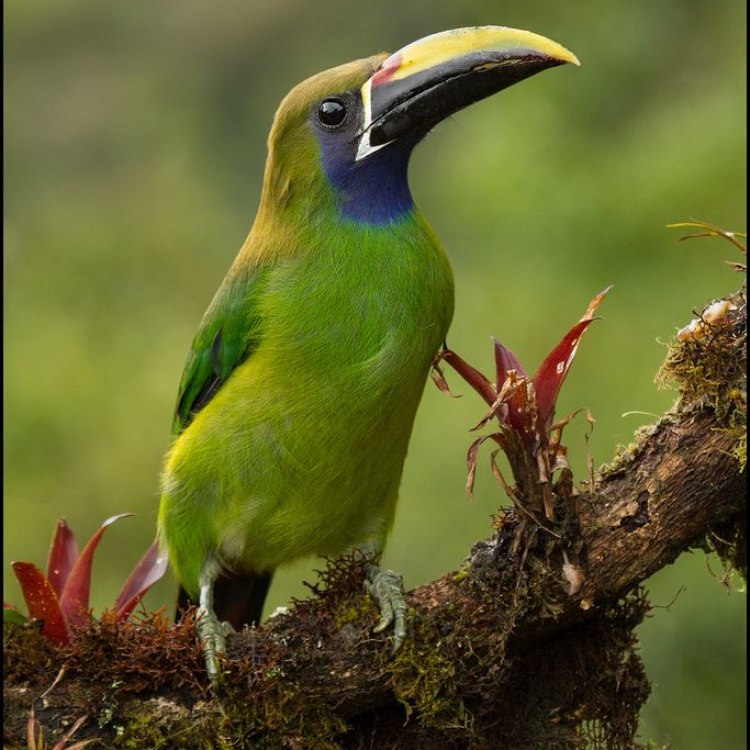
Aulacorhynchus prasinus
The Emerald Toucanet: A Colorful and Distinctive Tropical Bird
When you first see an Emerald Toucanet, it's hard not to be awed by its vibrant colors and long, colorful bill. This small to medium-sized bird is a member of the toucan family and is commonly found in the tropical regions of Central and South America. But there is more to this beautiful bird than just its appearance. In this article, we will explore the unique features and behaviors of the Emerald Toucanet, as well as its role in the ecosystem and the threat it faces from human activity PeaceOfAnimals.Com.A Small Bird with a Long Lifespan
The Emerald Toucanet may be small in size, but it has a long lifespan, with an average of up to 20 years in the wild. This is quite impressive for a bird of its size, as some larger birds have shorter lifespans. This is due in part to its relatively safe lifestyle and its ability to adapt to different habitats.Monogamous Reproduction and Nesting Habits
The Emerald Toucanet is a monogamous bird, meaning that it mates for life with a single partner. This is a common behavior among birds, and it helps in the successful raising of young. The breeding season for these birds varies depending on their location, but generally, they breed from February to August.In terms of nesting, the Emerald Toucanet is known for its unique behavior of nesting in tree cavities. The female will lay 1-5 eggs, and both parents will take turns incubating them. Once hatched, the chicks will stay in the nest for around 6-7 weeks before fledging Eel Catfish. This nesting behavior is crucial for the survival of the species, as it ensures the safety of the young from predators.
Loud Calls and Active Behavior
One of the most distinctive features of the Emerald Toucanet is its loud, yelping calls. This call is often compared to the sound of a croaking frog and can be heard throughout the day. These calls are not only used for communication between mates, but also to announce territorial boundaries and warnings to potential predators.Speaking of predators, the Emerald Toucanet is an active bird, primarily active during the day. It is also an excellent climber, using its strong beak and zygodactyl feet (two toes facing forward, two facing backward) to move through the trees. This behavior allows it to forage for food and escape potential danger.
Non-Migratory and Social Habits
Unlike many bird species, the Emerald Toucanet is non-migratory, meaning it does not undertake long-distance journeys to find food or suitable nesting grounds. Instead, it stays in its home range, which can be as small as a few acres or as large as a few hundred acres. Within this range, the bird is usually solitary or found in small pairs or groups. This behavior is essential for maintaining a stable population and avoiding competition for resources.A Threatened Species
Unfortunately, despite its unique features and behaviors, the Emerald Toucanet is facing various threats in the wild. One of the most significant threats is habitat loss due to deforestation for agriculture and urbanization. This loss of habitat not only affects the toucanet but also many other species that share its habitat.Another significant threat to the Emerald Toucanet is the illegal pet trade. These birds are often captured and sold as pets, which not only disrupts their natural behavior but also contributes to their declining population in the wild. This practice is illegal, and it is vital to educate people about the negative impacts of keeping wild animals as pets.
The Importance of Conservation
Currently, the Emerald Toucanet is classified as Least Concern on the IUCN Red List, meaning it is not considered to be in immediate danger of extinction. However, this does not mean that there is no cause for concern. The decline in the bird's population and its disappearing habitat are significant issues that need to be addressed to ensure the survival of the species.Efforts are being made to protect the toucanet's habitat and prevent illegal poaching. Conservation organizations are also working to educate communities about the importance of preserving these birds and their habitat. In addition, responsible ecotourism can also contribute to the conservation of the Emerald Toucanet, as it can provide economic incentives for local communities to protect the birds and their habitat.
An Important Role in Ecosystems
Beyond its striking appearance, the Emerald Toucanet plays a crucial role in its ecosystem. As a frugivorous bird (fruit-eating), they are important seed dispersers. As they fly from tree to tree, they carry seeds with them, aiding in the reproduction and dispersion of plants. This not only benefits the plants but also other animals that depend on these fruit-bearing trees for food.In addition, the toucanet's nesting behavior also helps in ecosystem preservation. By nesting in tree cavities, they create homes for other animals, such as small birds and mammals, who use these cavities for their own nesting or as shelter from predators. This interconnected web of life highlights the importance of the Emerald Toucanet in its ecosystem.
Human Use and Conservation
While the Emerald Toucanet is an important part of the ecosystem, it is also being kept as a pet in many parts of the world. This practice is concerning, as domesticating wild animals can have severe consequences. Not only does it disrupt their natural behavior, but it also contributes to the decline of the species in the wild.It is essential to understand that these beautiful birds are meant to live in the wild, not in a cage. By supporting conservation efforts and spreading awareness about the threats they face, we can ensure that future generations will be able to admire these birds in their natural habitat.
In Conclusion
The Emerald Toucanet is a beautiful and unique bird that is not only pleasing to the eye but also plays a crucial role in its ecosystem. Its long lifespan, monogamous behavior, and distinctive calls make it an interesting subject for researchers and bird enthusiasts. However, this bird also faces significant threats from human activity, making it vital to protect and preserve its natural habitat. Let us all do our part in preserving the Emerald Toucanet for future generations to appreciate and enjoy.
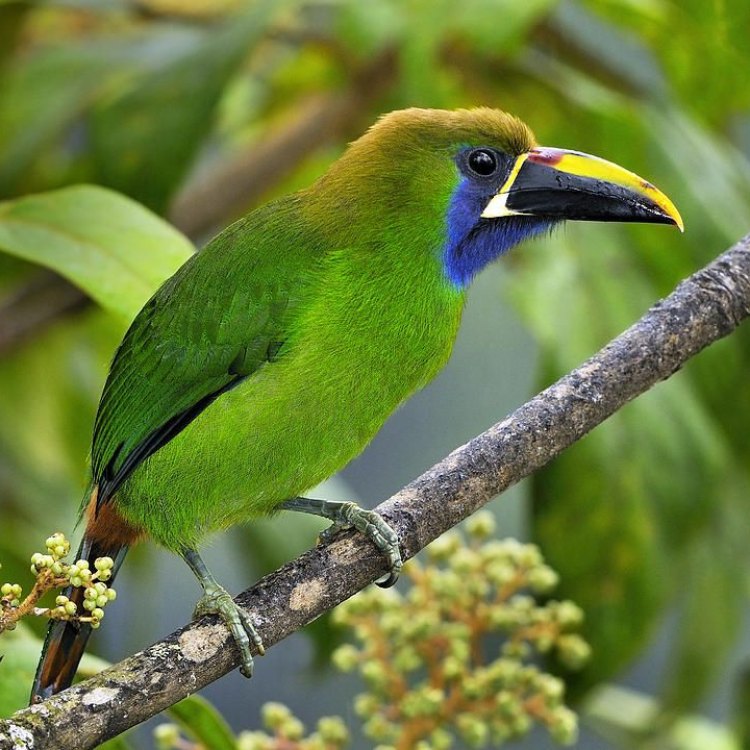
The Majestic Emerald Toucanet: A Jewel of the Tropics
Disclaimer: The content provided is for informational purposes only. We cannot guarantee the accuracy of the information on this page 100%. All information provided here may change without prior notice.



